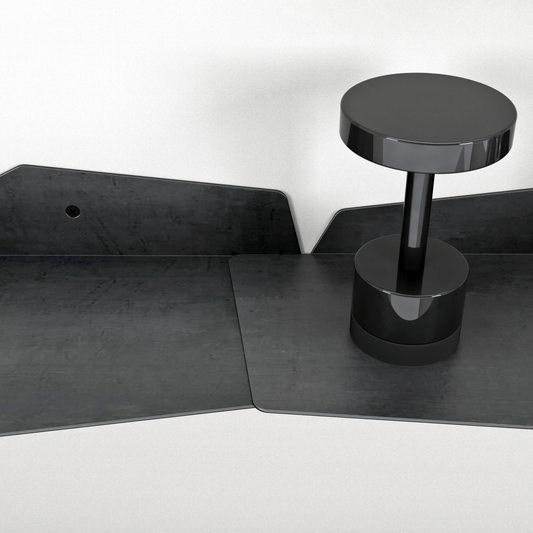In the world of furniture design, where precision and perfection often take center place, there exists a realm where the unexpected becomes an advantage, and imperfections transform into captivating features. What might be perceived as flaws in traditional materials such as wood, metal, stone, and plastic, are, in fact, the very elements that draw the attention of artisans like myself, turning each creation into a testament to the raw, unbridled beauty of the materials themselves.

In the pursuit of crafting distinctive furniture and home accessories, the joy lies in the direct manipulation of the final material, bypassing experimental models and substitute materials. The process involves an intimate dance with the natural characteristics of the chosen material – be it the warmth of wood, the cool resilience of metal, the timeless elegance of stone, or the versatile nature of plastic.
One might be tempted to smooth surfaces, apply a uniform color tone, or impose geometric precision upon the material. Yet, the unique traits and even what some may label "flaws" truly capture my imagination and foster a profound connection. Rust, often dismissed as a defect in metal, takes on a new identity as a decorative natural coating, akin to the captivating mineral shades adorning a marble slab.
The allure of imperfection extends beyond the realm of natural patterns to the deliberately created randomness that defines artificially induced textures. Consider the galvanizing process that orchestrates a rust pattern on a material's surface or a wood crack that imparts a distinct character to a wooden panel. These unpredictable patterns, born of intentional chaos, mirror the beauty found in the spontaneity of the natural world.

Clients, initially alarmed by what they deemed defects in a marble slab, discovered the organic mineral shades shaped by the Earth's ancient forces, untouched by human hands. This revelation challenges the very essence of our relationship with nature and questions the extent to which we impose our aesthetic preferences upon it. The honest allure of imperfect material, untouched by industrial uniformity, emerges as a rare and personal treasure over time.
As I navigate this world of materials, shapes, and finishes, I find myself drawn to asymmetry and amorphous motifs inspired by nature. Unlike the predictable symmetry that envelops our daily lives, asymmetrical shapes forge a deeper connection, perhaps because they exude intention and personal expression. In a world dominated by straight lines, embracing the irregular becomes a deliberate departure from the norm.
Working with natural materials, shaping amorphous forms, and embracing uneven finishes grant me the freedom to personally process each product. It is a departure from the confines of factory production, allowing for forgivable inconsistencies that add a touch of human essence. This hands-on approach not only disconnects me from the rigors of modernity but also provides a therapeutic, relaxing outlet.

In this ever-evolving journey of crafting furniture, the imperfections become the hallmarks, the irregularities transform into unique signatures, and the unpredictable patterns narrate stories of material resilience and human creativity. As I delve deeper into the art of embracing imperfection, I can't help but wonder what undiscovered treasures await in the future – what new materials, patterns, and techniques will emerge, inviting us to challenge our perceptions and redefine the very essence of beauty in design. The adventure continues, fueled by an insatiable curiosity for the untold stories that lie within the heart of each imperfect creation.



1 comment
כל הכבוד. מאמר מאד מעניין. היה אדריכל מתחילת המאה העשרים בשם מקינטוש שהשימוש בחוסר סימטריה במבנים שלו לטעמי עשתה אותם למאד מעניינים. הוא תכנן גם ריהוט יפה מאד אני זוכר את הכסא שלו.
כל הכבוד